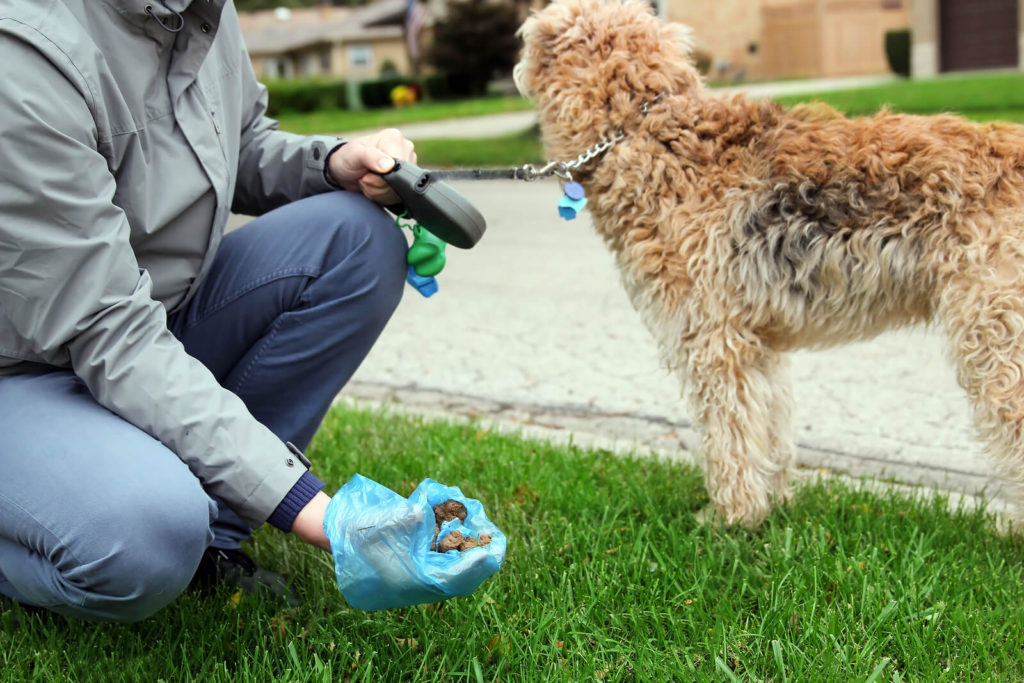For most dog owners, paying close attention to the poop you are scooping is the last thing you want to do. However, this might not be the right way to look at it.

Dog poop, in all of its various and smelly forms, can actually yield a lot of information about your animal’s health. Proper attention can warn of medical problems, and miscalculations in a dog’s diet and exercise. Here are some tips for examining your dog’s doo-doo carefully:
Look for just a few Lincoln Logs:
A healthy dog’s poop should ideally form in a shape close to that of a Tootsie Roll. Feel for the consistency, the best consistency being slightly soft and not brittle or runny. Also, take note of the poops odor. If the smell of the poop is so strong that you lash back in disgust, or the quantity is so great that it requires multiple poop bags, consider that your pet’s food might be low quality, or trading healthy ingredients for undesirable alternatives. If a change in food is necessary, it’s always wise to consult a vet before making the switch.
What’s inside counts:
For those most-determined dog owners, the buck doesn’t stop at an outside examination of your animal’s poop. When dissected (with gloves or a plastic bag, please), the poop should look just the same inside as it does outside.
If foreign objects exist inside the poop, a little detective work can inform an understanding of unhealthy behavior. Grass, plastic, and rocks inside the stool might indicate a penitent for eating what should not be eaten, so closer attention during walks may be needed. Conversely, fur in poop can indicate overzealous self-grooming and anxiety. Worms (in a fresh poop) are a red flag for parasites, so consult a vet upon their discovery.
Diarrhea is a no-no:
Like humans, Diarrhea is often a sign of stomach irritation and the ingestion of bad food. While a careful eye on your animal’s consumption of food scraps or changes in their diet can be the solution for small and infrequent runny poop, continuous diarrhea, in quantities large or small, can indicate infections and malfunctions of the small or large intestines. If diarrhea persists, especially if mucus, blood, or severe discoloration are present, consult a vet for an examination as soon as possible.
Color is important:
In fitting with the Lincoln Log comparison, your dog’s poop should ideally be a chocolatey brown color. And while PetMD states that minor discolorations can be the result of dehydration, or dyes in food, there are certain common discoloration’s that generally indicate something more sinister.
Tar-like, black poop is often caused by bleeding in the upper digestive tract, while red, blood-colored streaks indicate bleeding nearer to the rectum. Additionally, the malfunction of a dog’s pancreas, liver, and gallbladder will all often cause severe discolorations in feces.
Mucus or Coating Might Be Trouble:
Don’t sound the alarm just yet. Dogs have glands in the digestive tract that produce mucus to lubricate the colon and make pooping a little easier. However, if you are consistently noticing trails of this coating in the grass after scooping your dog’s poop, or if you consistently see streaks of blood in tandem with the mucus, this could be a sign of bowel inflammation.
The Bottom Line:
Use your senses. Poop is certainly gross to examine, but a conscientious dog owner can usually tell if their dog is under some sort of digestive duress with a quick look. If anything is especially peculiar, messy, or sizable, don’t waste time and consult your veterinarian. If the poop looks normal, try not to think about it more than you have to.

